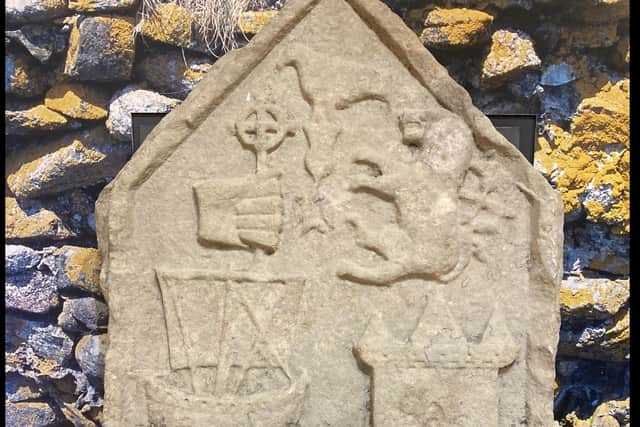When a stolen 'cursed' clan gravestone was found in a London flat
The stone once marked the grave of John of Moidart, former chief of Clanranald, at Howmore, the most ancient church site in South Uist.
But in 1990, the stone was discovered missing with a national appeal launched for its recovery and islanders and the then Ancient Monuments Department starting an investigation into its disappearance.
Advertisement
Hide AdAdvertisement
Hide AdFor five years, its whereabouts were unknown until its discovery, in tragic circumstances, in a flat in Euston, London.


The stone was found by the parents of the late Lawrence Mabon, whose parents had travelled from Canada to clear out his flat after his death.
Along with the 160kg stone were photographs of it being removed by two men, one of them identified as Lawrence Mabon by his father. The second man has never been identified with the reasons behind its theft remaining unknown.
Mr Mabon, alerted to the carvings on the stone, informed the British Museum of the discovery with National Museums Scotland then contacted.
The 550-year-old stone appears to depict the galley of the Lords of the Isles, Castle Tioram, a hand holding a cross-crosslet, a rampant lion and a raven.
It was returned undamaged to South Uist where it is believed by some locally that a “legendary curse” surrounds the grave marker, according to Kildonan Museum, where it remains a key exhibit.
A panel by the stone states: “Folklore has it that anyone who desecrated the ancient grave would be doomed to meet an early death. Many believe that the curse was responsible for the early death of Lawrence Mabon at the age of 33 years.”
A verdict of misadventure was recorded at the inquest of his death, according to the museum.
Advertisement
Hide AdAdvertisement
Hide AdThe site at Howmore may have been used in pre-Christian times with the main chapel dating to at least the 8th Century. Some believe Christians used the site some 200 years earlier.
During the medieval Lordship of the Isles, Howmore became a centre of learning was later used as the burial place for the Clanranald chief
John of Moidart died in 1584, 40 years after he secured the leadership of Clanrandald at the Battle of the Shirts at the head of Loch Lochy, near the village of Laggan today.
The battle, named given the tradition the battle was fought on a day so hot that the men had to remove their plaids, was a violent escalation in the dispute over the rightful heir to the chiefdom.
Around 300 Frasers and Macintoshes, led by Lord Lovat and Ranald Gallda, pretender to the leadership, were attacked by as many as 600 MacDonalds and Camerons, led by John of Moidart.
The battle was little more than an anarchic struggle for survival with both Lovat and Gallda among the dead and John of Moidart was severely wounded.
He secured both the chiefdom and legendary status – with a good few stories circling the clansman over time.
Comments
Want to join the conversation? Please or to comment on this article.